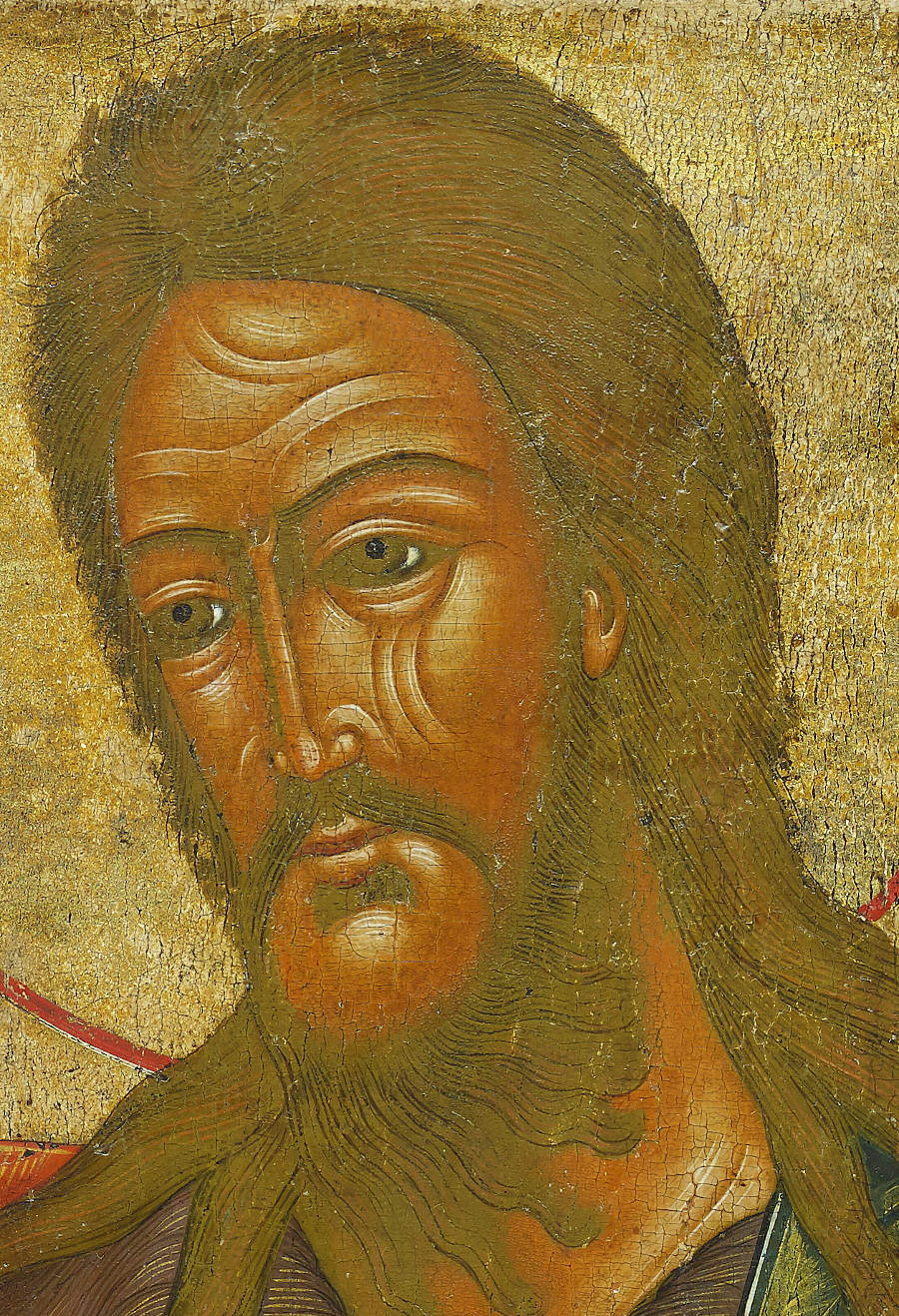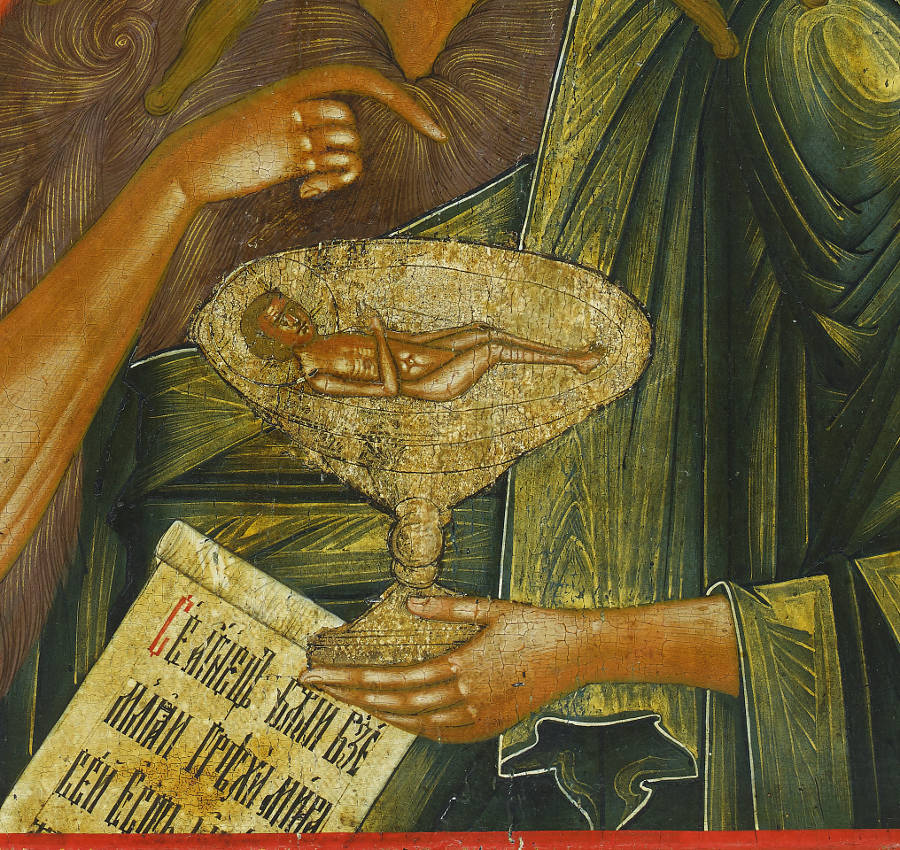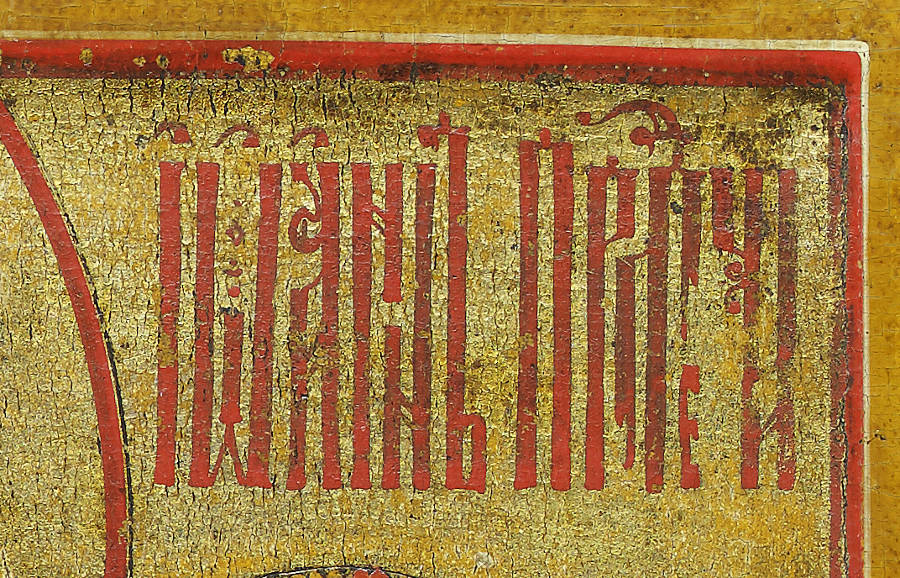 Exhibitions Archive
Exhibitions Archive
 Exhibitions Archive
Exhibitions Archive

AZ02. Saint John the Forerunner, (Saint John the Baptist, ‘Angel of the Desert’)
Central Russia, Urals, Nevyansk School(?), late 18th century
Panel: 44.6 x 37.9 cm; 2.6cm thickness![hideselects= [On] header =[Convert size] body = [Click here to show the size in inches] Click here to convert metric size to imperial](images/inches.gif)
Condition: Fairly good condition, minor repairs
Inscriptions: In Old Slavonic: on the scroll Ce Agnetsbijhiy vzemlai Gryekhiy ‘Behold the lamb of God that taketh away the sins of the world’, John 1:29. Either side of John’s head, Иоанн Пр[едт]ча SVYATUIY IOAN PREDTECHA, ‘Saint John the Forerunner’.
Provenance: Art market, Belgium
Feast Day: 7th January (Synaxis), 24th June (Nativity), 29th August (Beheading)


No. 2. Detail. Look of compassion for human suffering and of hope for human redemption; a look of self-knowledge and presence.

No. 2. Detail. Christ as the Eucharistic symbol of the Lamb of God.

No. 2. Detail
St John is shown half-length wearing a dark maroon hair shirt, traditional for desert ascetics, and over which is a blue himation with gold reflexes. His red wings fill the space up to the kovcheg or raised border. He holds a chalice-shaped discos, or paten, in his left hand while his right hand points to what it contains: the miniature figure of Christ as the Eucharistic symbol of the Lamb of God. John is turned to his right reverently gazing towards what would have been an icon of the Saviour, now lost. An icon of the Mother of God, also facing inwards, would have completed the group constituting a Deesis1 (Fig. 1).
Fig.1. Deesis Russian, 19th century2
The symbolism is profound, as always with icons, elaborating the mysteries of Transubstantiation, Intercession and Redemption3 . The work is highly accomplished as one sees in the precision of the brushwork and in the way the painter balances colour and form. The engagement with profound theological matters is not merely academic; it is artistic and the beauty deepens the experience of the onlooker for whom the theology is intended. Meaning is conveyed in the restrained dignity of John’s look: a look of compassion for human suffering and of hope for human redemption; a look of self-knowledge and inner presence.
The articulation of the lettering is confidently and finely executed. This may have been done by a specialist calligrapher rather than the painter and indicates the high standards that the workshop maintained. The work is tentatively ascribed to Nevyansk, where a number of Old Believer workshops were established in the Urals in the second half of the eighteenth century.
Fig. 2. Back of Panel
Footnotes:-